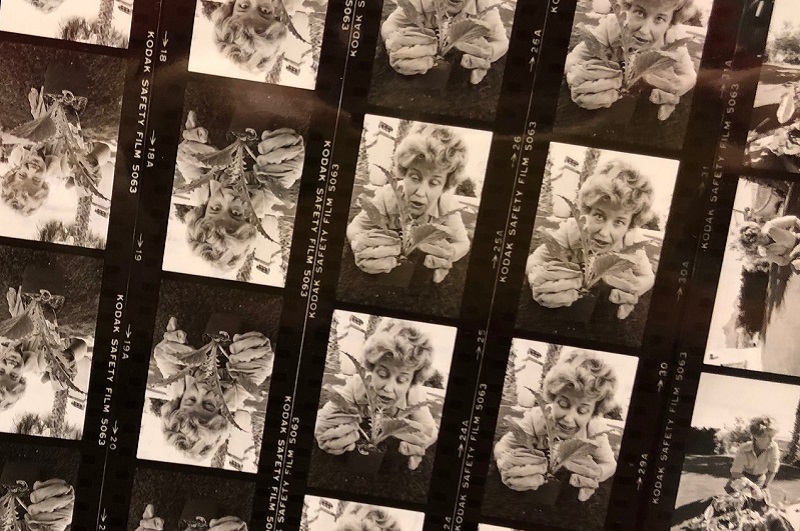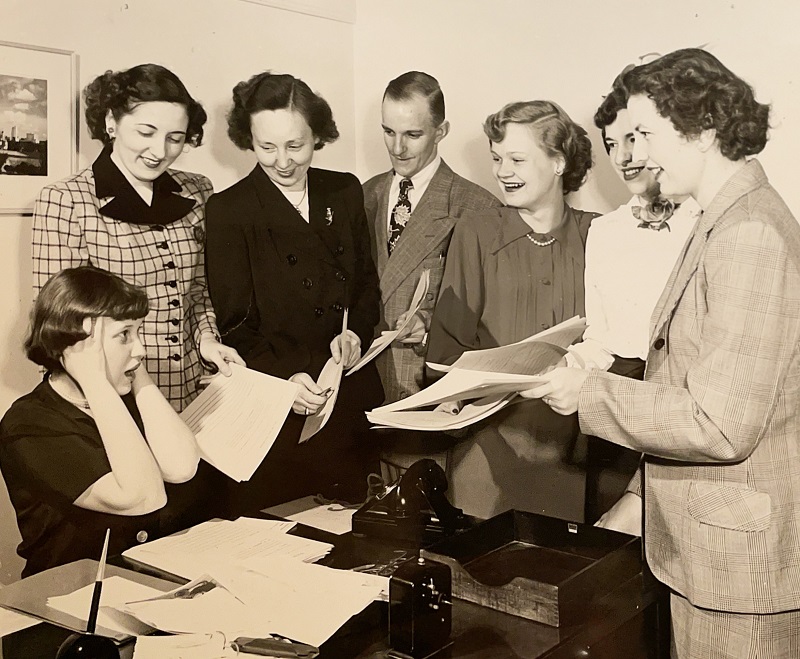University Libraries

Bombeck's Recipe for Writing
By Katie Jarrell
As one of the University of Dayton’s most famous alumni, Erma Fiste Bombeck ’49 has become a permanent part of the campus landscape: A section of Brown street is named “Erma Bombeck Way”; the Bombeck Family Learning Center’s name honors the family’s generosity; and every two years, the Erma Bombeck Writers’ Workshop is filled to capacity with established and emerging writers and humorists.
Bombeck was famous for her syndicated column, At Wit’s End, but she was also a bestselling author; made twice-weekly appearances on the TV show Good Morning America for 11 years; had one of her books adapted into a television movie starring Carol Burnett and Charles Grodin; and was a writer and producer of Maggie, her own TV sitcom. But before all of that, she was a wife and a mother with humble beginnings in Dayton, Ohio.
When I was hired in September as the project archivist to process her collection, my first goal was to get to know Bombeck better. As I was reading through news clippings of her interviews, I came across a 1970 article from the Chicago Sun-Times where she was asked who the “real” Erma Bombeck is. She replied, “To most people my image is a woman with fat calves, unmanicured hands, makeup-less eyes, 15 pounds overweight, overworked, over-childrened, under-patienced, a moralist, a square.” It’s a bit self-critical — but that’s exactly what makes her so charming.
At this point in processing the collection, I’ve found that the funny thing about Bombeck (aside from her wit) is that she can be relatable to everyone. I wanted to figure out why. What made so many people find humor in a column written from the perspective of a self-proclaimed square? Beyond that, I wanted to determine what value this collection has to offer to a generation of UD students who may only know her name from a street sign.
Bombeck lives on
Growing up, my mother used to talk about Bombeck all the time, and I remember seeing The Grass Is Always Greener over the Septic Tank on our bookshelf and finding clippings of her columns stuck in notebooks and drawers around the house. Though Bombeck did most of her writing in the 1970s and ’80s, her work holds up through a 21st-century lens.
When asked about her writing method, she gave her formula: “Hook ’em with a lead. Hold ’em with laughter. Exit with a quip they won’t forget.” However, she didn’t mention another ingredient. The element that makes her feel familiar and funny to so many people is the timelessness and authenticity of her voice. Her lack of pretension is refreshing in a world of filtered content.
What can we learn from her?
Although Bombeck was known for her humor, she almost always wove a serious note or a strand of universal truth into her work. For example, one of her columns discusses a grandmother who wrote a complaint that a previous column had been offensive. In response, Erma writes, “The more I read the letter, the more I read into it. How absolute is our intolerance. How we surround ourselves only with people who look as we do, believe as we do, act as we do and dress as we do. Can we learn nothing from our adversaries?” (Jan. 22, 1971). Rather than confronting the letter with her usual wit, she uses it as a moment to thoughtfully reflect and encourage others to do the same. Of course, in true Bombeck fashion, she ends with the quip, “Grandma, I’m gonna give you a second chance to love me.”
My hope for this collection is that students, staff, faculty, researchers and Bombeck enthusiasts come to the archives and get to know Bombeck. Her manuscripts, speeches, interviews, personal and professional correspondence, memorabilia and more will be available to view. Whether you’re doing a research project about her life, looking for inspiration for a creative writing class or just want to browse the boxes, there’s something interesting for everyone—and I promise she’ll make you laugh.
— Katie Jarrell is a project archivist in the University Archives and Special Collections.

Erma Bombeck at the Journal Herald
Erma Bombeck at the Journal Herald

